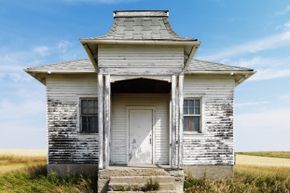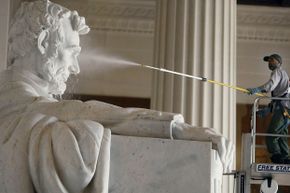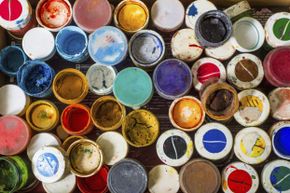In the bright light of a new summer, the outdoors couldn't look better. The grass is neon-green, the sky is itself-blue, and the clouds gleam wispy-white.
As you stroll the grounds of your castle (or just step out on your front stoop), you notice that one thing doesn't fit in the brilliant glory: your house.
Advertisement
It's faded. It's dirty. It's peeling and cracked like an old sunburn.
Suddenly, summer doesn't seem as fun anymore, not when you have an endless exterior house-painting job looming over you. To make it more enjoyable, let's play a game where we predict the horrible house-painting mistakes you're about to make before you make them. Avoid these, and you might salvage your summer, as well as your time and money.










